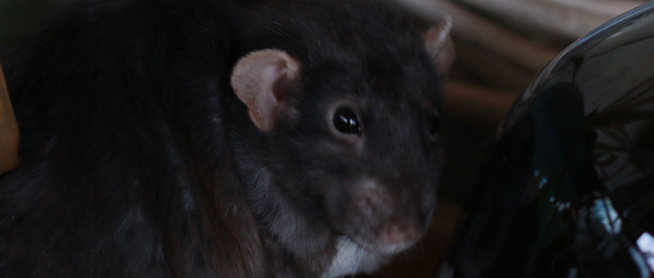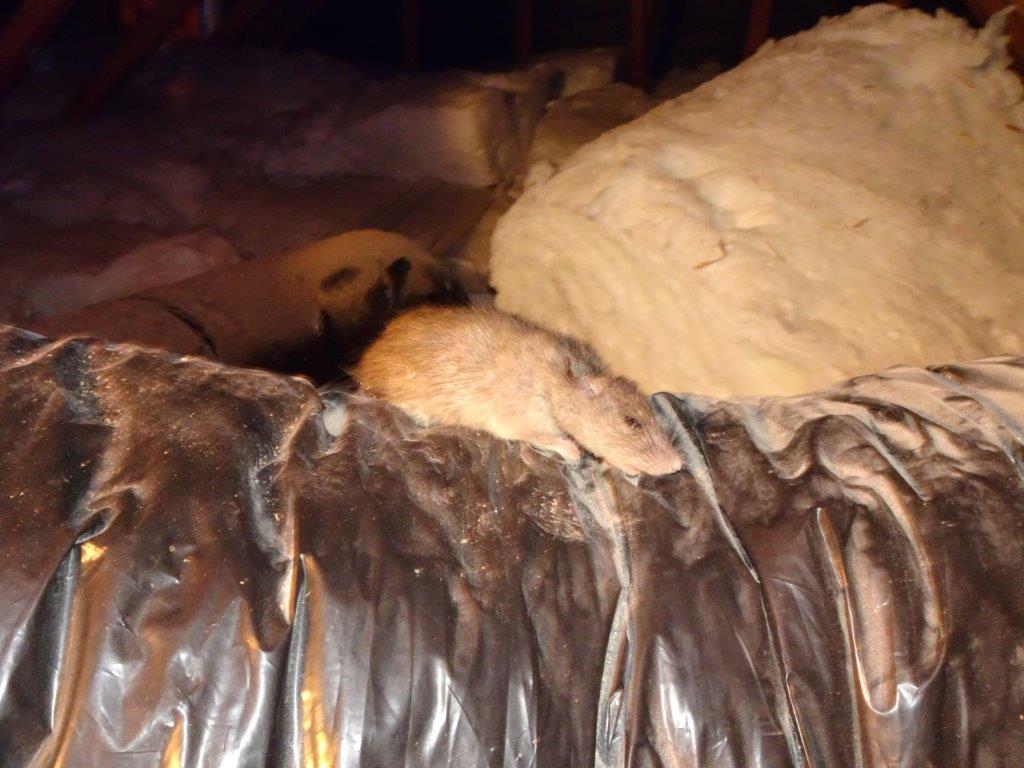The Norway rat, or brown rat, can reproduce a lot. That's the rat you'll probably find in your homes, and if you have got one in there, you will want to get it out ... and fast. Rats wre well known to be fast breeders, and when we say fast, we mean fast. Female rats can have multiple babies in one litter, and on top of that, they can have multiple pregnancies, and therefore multiple litters, throughout the year. Unlike other animals, rats do not have a “mating period” as such. If the mood is right and there are males around, those ladies will breed!

Those babies that she has – they reach sexual maturity in as little as four to six weeks, average being five, and they can, once again, go through the same cycle – up to five or six litters in a single year, with 5-15 babies born each time. They mean business when they breed. It's safe to say that. Oh, and female rats can get pregnant as soon as they have given birth. The stamina on them is actually very impressive.
It's believed that rats will change their mating technique to suit the situation, and some males will experience several ejaculations. This means that they can have sex with a number of female rats in one “sitting”, increasing the chances of more babies, and therefore the species living on.
Females also have some pretty staggering features too. If a large portion of the rat population is wiped out, for example, the females will “up” the speed of their mating, ensuring the numbers are bumped back up by having as many young as possible, in the quickest time possible. If food is low, however, they can also slow things down.
Black Rat
The black rat's population has declined over recent years, especially with the introduction of the common brown rat. Humans have also made life quite hard for the black rat, placing poisons down and ushering the critters out of homes. You could say that they've had quite a hard time of things.
They prefer warmer areas, but this could be mostly because of the flourishing brown rat population in the cooler areas of the world, and their population numbers, and mating habits, will depend on the area around them. If the situations are good, they will breed a lot. If the conditions are not good, the breeding habits will slow down. One thing that has been shown to cause a baby boom in these black rats, is the growth of bamboo. It seems to serve the rodents rather well.
Go back to the Rats in the Attic home page.
What is a rat's mating habits?

Norway rats live in underground tunnels and burrows in colonies or hordes. The burrows are initially narrow and shallow, but as the rats grow, they dig the burrow further to accommodate their new size. Norway rats do not have a single burrow but they dig tunnels that form a maze so that they can easily escape from predators. These burrows have one common opening and some holes that the rats use for escaping danger.
A Norway rat’s mating and gestation period is about 22 days and the female pups reach sexual maturity or puberty in 2-3 months. They give birth to a litter of 8-12 pups and can have about seven litters a year.
The pups are naked and blind at birth and that means they depend on their parents for warmth and sustenance until they are old enough to look after themselves. They open their eyes when they are around nine to fourteen days old and live for about a year. Norway rats live in colonies and breed throughout the year, but breeding peaks in the spring and fall seasons. Breeding decreases during hot summers or very cold winter periods, especially for the outside colonies because the weather must be conducive to raise the young pups.
Norway rats usually nest in crawl spaces and basements, but may also live in attics and ceiling areas when their colony is densely populated. The Norway rat builds its nest with soft materials like paper or grass and if necessary, the Norway rat climbs through structures in search of very comfortable nesting sites.
Black rats are smaller than Norway rats and they find shelter in the upper parts of buildings. They are brown intermixed with black, gray, or white undersides. Black rats are long and thin with scaly tail, large ears, and eyes.
They live in colonies like other rat species and prefer places like attics and rafters. They also live in and around structures and piles of wood and debris.
Black rats prepare their nests before the arrival of their pups with soft and warm materials and build their nests in crevices, rotten trees, or in buildings.
Black rats are pup-making machines and mate around five hundred times within a six-hour period. Black rats produce up to two thousand offspring in a year and have a litter size of about 6- 22 pups.
Black rats are very social and polygamous animals and a single male mates with a number of females. The most dominant male is the most successful breeder and the rats usually mate from March to November. Their pregnancy period is about 21-29 days, and their young pups are born blind and without fur.
The pups open their eyes when they are about fifteen days old and gain independence when they are three or four weeks old. Female roof rats become sexually mature at 3-5 months old, but they stay in their birth colonies until the population increases then they leave.








